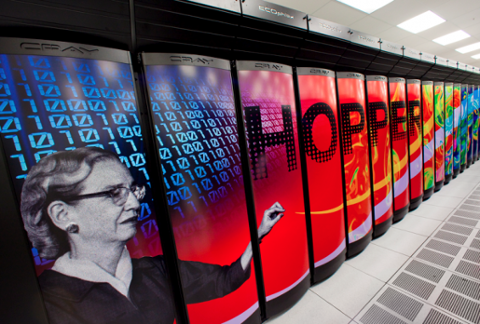
The Department of Energy's Environmental Molecular Sciences Laboratory has ordered up a 3.4-petaflop supercomputer designed to replace “Chinook,” once one of the top 25 fastest supercomputers in the world. Atipa Technologies, which has been building Linux clusters as the HPC division of Microtech Computers, won the competitive contract worth $17 million, the company announced Jan. 24. EMSL said it expects to have the new, unnamed system up and running for researchers by October 2013. The supercomputer will be used for the same purposes as Chinook, the existing supercomputer onsite at the DOE’s Pacific Northwest campus in Richland, Washington: climate and environmental science, including climate change modeling; chemical processes; biology-based fuels that can replace fossil fuels; and other applications. Over 400 scientists currently use Chinook, and access to the new supercomputer will likewise be open to all, albeit on a competitive basis. "More computing power is like having more pixels in a picture,” EMSL biology science lead Scott Baker wrote in a statement. “We'll be able to look at proteins and complex biological interactions more realistically. This will allow us to better understand and control organisms like microbes so that we can develop new renewable fuels." The 42-rack machine will boast a total of 195,840 cores, consisting of 23,000 conventional Intel Xeon processors tied to 184,000 gigabytes of memory. The 1,440 compute nodes will also have an undisclosed number of Xeon Phi coprocessing cards alongside the Xeons, allowing the system to parallelize up to 120 extra calculations. A shared parallel filesystem will offer 2.7 petabytes of usable storage, across an FDR Inifiniband network. In total, there will be 128 GB of memory per node. What sets the new supercomputer apart, Atipa said, is the amount of memory devoted to each CPU, allowing the models that scientists run to operate more efficiently. For comparison, the recently completed “Stampede” supercomputer at the University of Texas also relies on just over 184,000 gigabytes of memory, including 204,900 cores split between a number of 8-core Intel Xeon E5-2680 microprocessors. The Chinook, with 18,176 total cores of quad-core Opteron chips, debuted in twenty-first place on the TOP500 list in November 2008. Since then, newer supercomputers have pushed Chinook down the list to the number 313 spot. Atipa will deliver the computer's components by July 2013 and assemble it at EMSL, where the EMSL team will spend a few months installing and configuring the system. In the meantime, EMSL will be sponsoring a contest to name it. Image: EMSL
